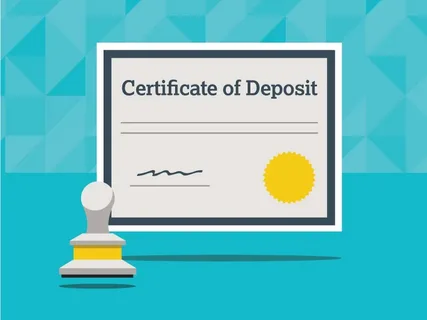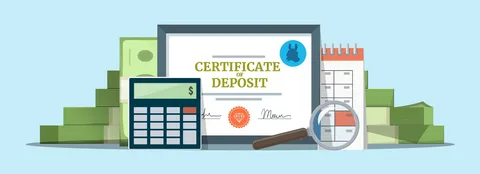Attention savers: There are fewer and fewer high-yielding certificates of deposit (CDs) available to you. Furthermore, before the Federal Reserve’s upcoming interest rate meeting on September 18, the returns on high-yield savings and money market accounts—variable rate deposit accounts that are likely to fluctuate in lockstep with changes to the federal funds rate as determined by the Federal Reserve—may decrease.
Table of Contents
Experts in finance and market forecasting are optimistic that the Fed will cut interest rates in September. Based on the values of federal fund futures contracts, the CME Group FedWatch program predicts a 100% chance of a rate drop as of August 8. The Fed will cut rates at its upcoming meeting for two reasons: inflation is declining and unemployment is rising.
However, certain rates on deposit accounts—most notably CDs—have also been impacted by the most recent performance in the financial markets. Over the course of a few days late last week, concerns about inflation, a worse employment data, and the possibility of an unproven recession in the United States caused global markets, especially in Japan, to tremble.
Here’s what you should know about how returns on deposit accounts, such CDs and high-yield savings, are impacted by global financial markets and economic indicators, and how to be ready for further obstacles in the future when interest rates are dropping.
What recent events have occurred in the financial markets?
The U.S. and worldwide economies have not exactly been idle during the dog days of summer, as markets have been responding angrily to economic rumors and forecasts. Fed Chair Jerome Powell stated that rate reduction may be considered in September, despite the Fed’s decision at its July 31 meeting to again not drop rates. As a result, several banks have started to lower the annual percentage yields (APYs) on their CDs.
The unwinding of the Japanese “Yen carry trade,” in which institutional investors borrowed against the yen at almost zero rates to purchase growth stocks, came after the depressing U.S. jobs report on August 2. This caused Japan’s Nikkei index to fall 12.4 percent on August 5, marking the largest decline since 1987. Subsequently, the Dow Jones Industrial Index had a decline of 2.6 percent in the United States, surpassing a thousand points, intensifying conjecture that the Federal Reserve would lower interest rates earlier.
The fed funds rate, which is now stuck in a range of 5.25 to 5.50 percent, was last raised by the Fed for the eleventh time in the current rate cycle a little over a year ago. What goes up must come down, especially given we have been in an atmosphere of rising and increased rates since March 2022 and inflation is presently essentially under control. Because of this, the Federal Reserve is probably going to cut the federal funds rate in order to support price stability and job growth.
What recent market patterns indicate for deposit accounts
Deposit account interest rates are expected to fall through 2025, according to recent economic uncertainty and financial mood. As a result of certain financial institutions, such as online-only banks, already lowering their returns, astute savers are opening CDs and taking advantage of the still-high yielding APYs before rates go much more.
Certain fixed-rate deposit accounts have seen an increase in demand recently, according to several institutions. First Internet Bank of Indiana’s chairman and CEO, David Becker, told Bankrate that he had received more email questions about CDs from customers over the weekend and into Monday.
“We received a shout from the ground floor stating that the demand for CDs is overwhelming the ceiling,” Becker stated. “Let’s take a few steps back from them.” First Internet Bank reduced the annual percentage yield (APY) on its shorter-term CD periods, which are six months and one year, by 0.10 percent, or 10 basis points, and on its longer-term CDs, which are 18 months and longer, by 0.15 percent, or 15 basis points.

Bankrate monitored the highest one-year CD APY during the last two weeks, and First Internet Bank was not the only bank to lower its APYs. On August 6, Barclays likewise reduced CD rates everywhere. Its 18-month CD, which was initially valued at 4.50 percent APY at the beginning of the week, now yields 3.25 percent APY, a drop of 125 basis points. Also, BMO Alto reduced the annual percentage yield (APY) on its two-year CD by 55 basis points, or 0.55 percent, to 4 percent APY.
Chief financial analyst at Bankrate Greg McBride, CFA, claims that banks’ interest rates on CDs and savings are mostly determined by their demand for deposits. According to McBride, businesses that are substantially reducing their rates probably have less of a hunger for deposits than those who are still offering the most competitive returns. “They don’t pay those returns out of benevolence,” he adds. “We have the opportunity to take advantage of this disparity as savers,” McBride continues.
In which direction are deposit account yields heading?
CDs
As at Barclays and First Internet Bank, anticipate a broad downward movement in CD rates. According to McBride, “we’re on the downslope, and that will accelerate once the Fed starts cutting interest rates.” “Therefore, waiting to lock in has no benefit.”
The APYs of four of Bankrate’s top ten one-year CDs have dropped since July 29. However, the rates on each of those ten best-yielding CDs are still 5.1 percent APY or somewhat higher. Therefore, if you’re seeking for a one-year CD with a 5 percent yield, it’s still accessible. However, before the Fed’s next rate meeting on September 18, that might not be the case. By the time a Fed rate cut actually happens, you can usually count on CDs to have a rate cut baked into their annual percentage yield.
Generally speaking, CD yields peaked by the end of 2023.
Traditional and high-yield savings accounts
The yield on high-interest savings accounts may decline sooner rather than later, in September, when a rate drop by the Federal Reserve is still conceivable. Ally Bank, for example, decreased its yield on June 25, 2019, a little over a month before the Federal Reserve announced at its July 31, 2019, meeting that it was lowering the fed funds rate—the first rate drop at that time since 2018.
Savings account rates are normally variable, meaning they fluctuate in line with the federal funds rate, as opposed to CDs, which usually have fixed-rate returns. An introductory APY on a savings account is one exception.
Certain conventional savings accounts may see no change in returns at all, particularly if their yields have not grown during the 11 rate increases the Fed has made since March 2022. For instance, the normal rate for both Chase’s Premier Savings and Savings accounts is 0.01 percent APY.
Cashier accounts
Deposit accounts known as money market accounts occasionally incorporate elements of savings and checking accounts. Money market rates can fluctuate before or after a Fed rate decision, just like savings account yields.
First Internet Bank’s founder, Becker, says the bank plans to maintain the existing returns on its savings and money market accounts until the day the Federal Reserve adjusts the fed funds rate.
What is in store for 2024, and how can you get ready for any headwinds?
The rate is about to drop and may drop for some time. With CDs, you may fix the rate for a certain amount of time, unlike with savings bank accounts, which usually provide fluctuating rates. However, they might not be suitable for everybody.
For those who don’t have an emergency fund, which is often held in a savings account, or who will be spending cash soon, a CD might not be a wise choice.
When contemplating a CD, one should think about the following:
•Will you have to take the money out of the CD before it expires?
•Will the cash you’re putting into the CD yield an assured percentage rate of return?
•Do you have enough cash on hand to make sure you won’t have to take money out of the CD early and incur penalties?
Don’t delay if you think a CD is suited for you because doing so might result in lesser yields. We’ve just touched the surface, according to McBride. “Year-over-year yield reductions on CDs and liquid accounts are anticipated.” And when the Fed begins to lower interest rates in the coming months, that pace will quicken. If your money market or savings account’s yield is altered by a bank or credit union, your APY may become uncompetitive. Because of this, McBride advises comparing APYs as soon as you receive your monthly bill. According to McBride, “you have to know where you stand and what else is available.”
In short
After 29 months of growing and flourishing rates, rates are starting to decline, but it is still a fantastic time to save because peak yields are still more than inflation. Your money won’t lose buying power as long as the return you’re receiving—which is now 3.0 percent—is far higher than inflation.
A little reduction in the federal funds rate won’t have much of an impact given the declining rate of inflation and the 11 interest rate hikes that have increased by 525 basis points. For the time being, however.
Copyright 2024 Bankrate.com. Tribune Content Agency, LLC is the distributor.


